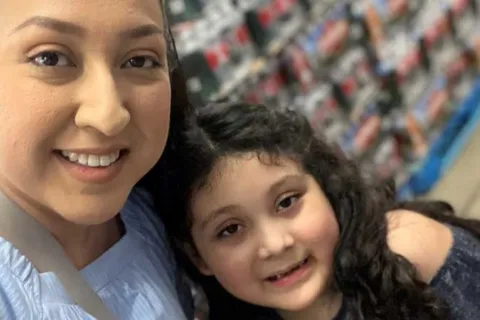6 ways to assist your child's ABA instructor
By Erica Kovacs, Ph.D.Guest post by Erica Kovacs, Ph.D., assistant professor of clinical psychology in psychiatry at Columbia University Medical Center, an Autism Treatment Network (ATN) center. Dr. Kovacs is a co-author of the ATN/AIR-P’s Applied Behavior Analysis Tool Kit.
How can I best partner with my child’s ABA (Applied Behavior Analysis) instructor?
First, I’m delighted to recommend that you download a free copy of the Applied Behavior Analysis (ABA) Tool Kit. I was part of the team of Autism Treatment Network (ATN) psychologists who developed this information-packed guide.
We developed this tool kit based on feedback from ATN medical specialists and parents. They agreed that parents needed more guidance on how they can work with their child’s ABA instructors and support this intervention at home. We’ve gotten some great feedback from both newly diagnosed families and experienced families who “test-drove” the tool kit. Parents say that it helped answer important questions. These ranged from such basics as “What is ABA?” and “What therapies are based on ABA?” The guide also explores the skills and behaviors that ABA supports and the components that prove important for the success of an ABA program.
6 ways to assist your child's ABA instructor
- Understand what makes a good ABA program. Parents should know the credentials of the person who designed and monitors the program, the training of the therapists, how goals for their child are being assessed and monitored, how data is being collected and family members should be trained to do therapy at home. If any of these components are missing from your program, discuss with the instructor how these can be built into it. (Refer to the ABA tool kit for a section on components of a good ABA program.)
- Observe and ask. Parents should observe their child’s sessions to gain an understanding of what is being done. This will help them use the same techniques at home and move the learning from the therapy session into the real world. Remember, many children with autism have difficulty transferring skills from one setting to another. To help with this transfer, parents need a clear grasp of what the instructor is doing and how to do it. Ask the instructor how you can help reinforce the therapy at home or outside of the session. Observing sessions, from time to time, will also deepen your understanding of the therapist’s approach.
- Follow through on strategies at home. As mentioned, it’s vital for parents to try to use the same strategies as their child’s instructor. This increases your child’s familiarity with the strategies and helps the child apply them in different settings. It also helps your child apply lessons to their “social environment.” As therapists we know that home practice speeds up your child’s response to our therapy.
- Keep an eye on goals. Make sure that your child is making progress. As I mentioned in step 1, collecting information is an important aspect of a good program. This will help you and the instructor gauge your child’s progress and adjust the program and approach if needed. Just remember that your role is to be supportive, not adversarial, with the therapist. If your therapist says your child has met a goal, and you don’t see it, try to find out the reason for your different viewpoints. Often, it’s that the child has mastered the skill with the therapist, but can’t yet translate it to the outside world. Working together with the instructor, you can help make this real-world application a goal for your child. Together, you can discuss how to help achieve this goal.
- Be understanding and accommodating with new instructors. It can be difficult for parents as well as children to adapt to a new therapist. The new therapist may use slightly different approaches that feel unfamiliar. Remember that ABA is designed to work with a variety of styles and personalities. It’s not uncommon for children to lose some ground when starting with a new therapist. Pay attention, but don’t be discouraged. Your child may simply need time to adjust.
- Pitch in. Parents can serve as a wonderful link between the ABA instructor and therapists and/or teachers in other areas of your child’s care and instruction. Don’t leave everything up to the professionals. Therapists also appreciate parents helping in other areas – for example providing some favorite rewards for your child.









